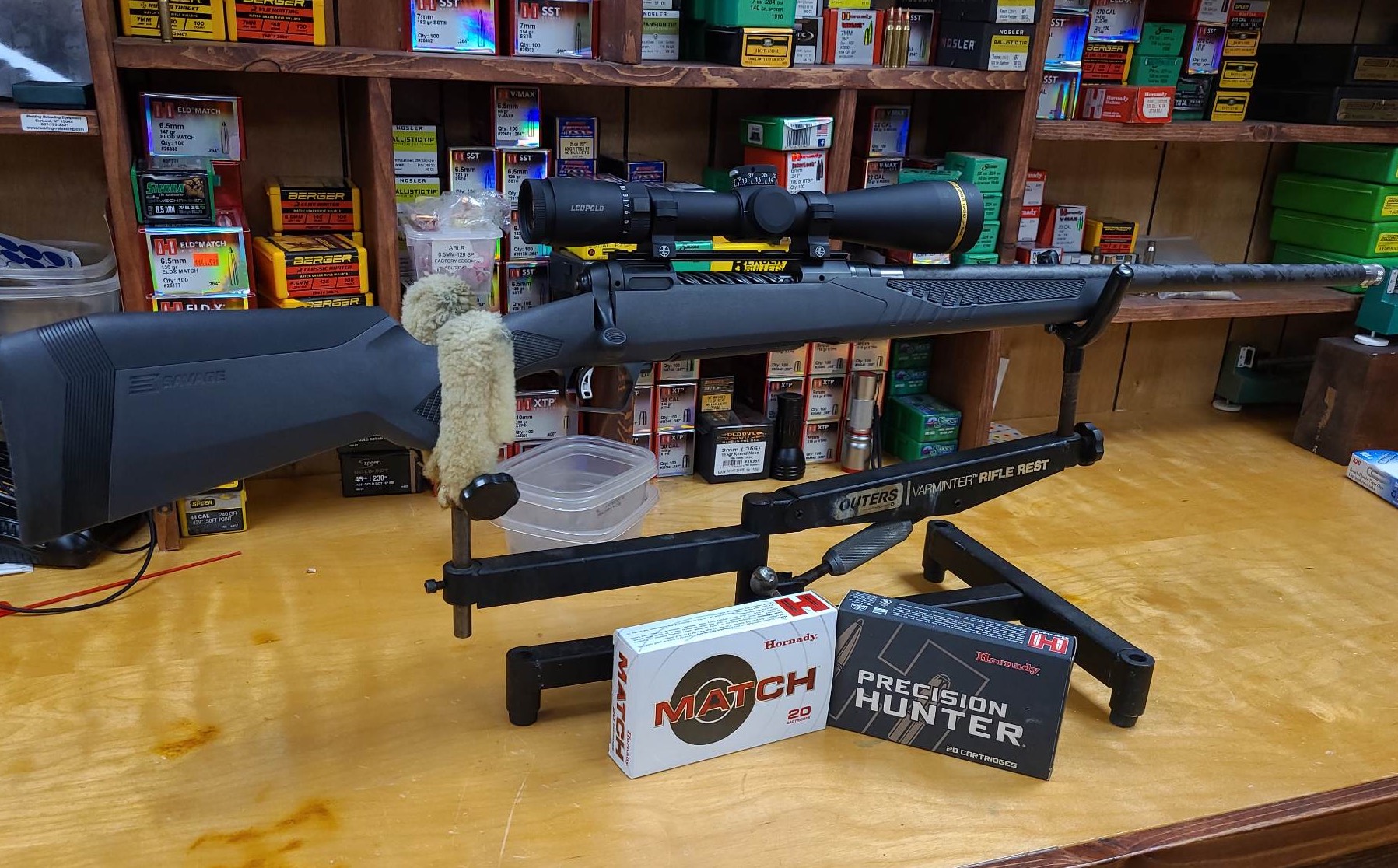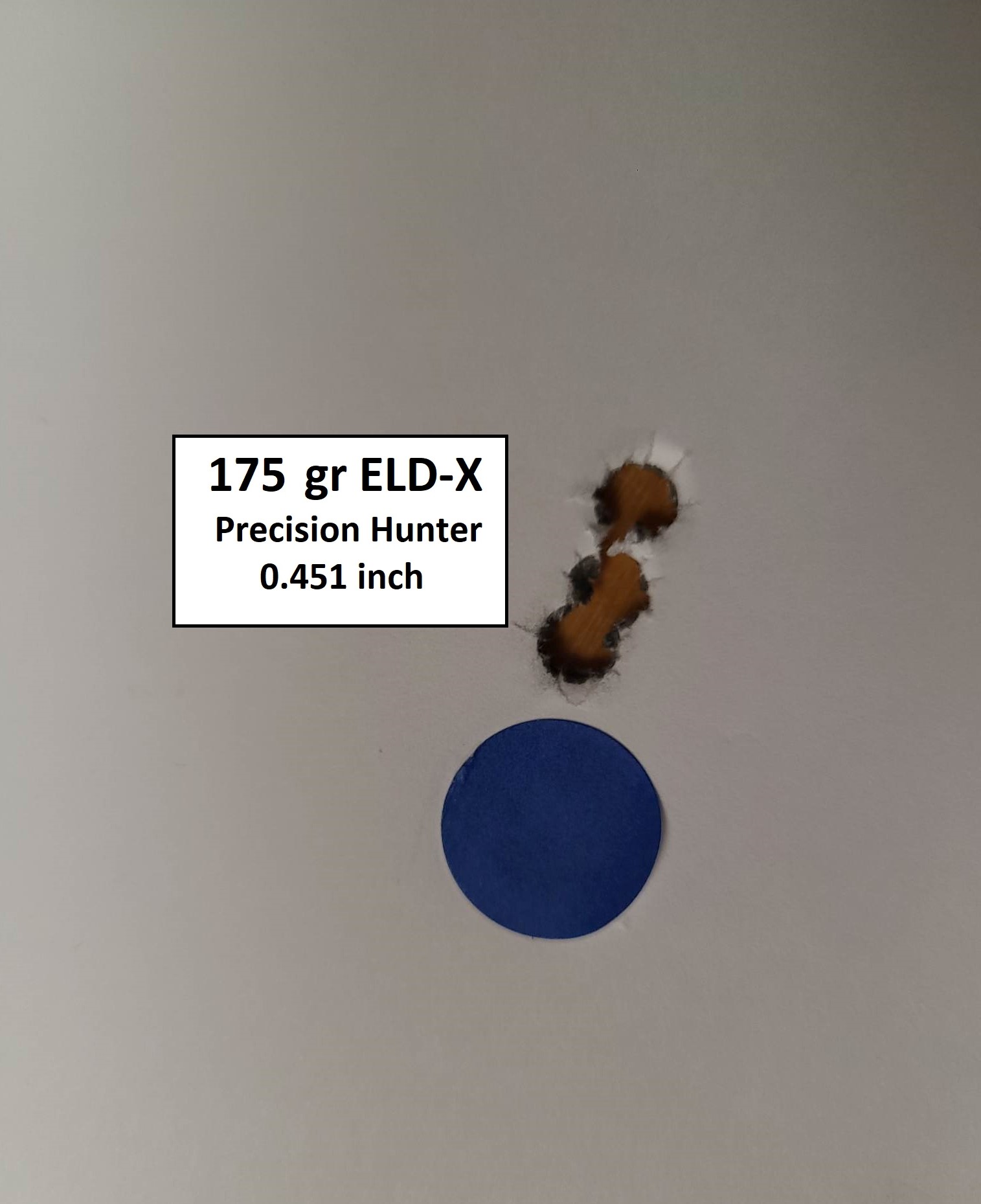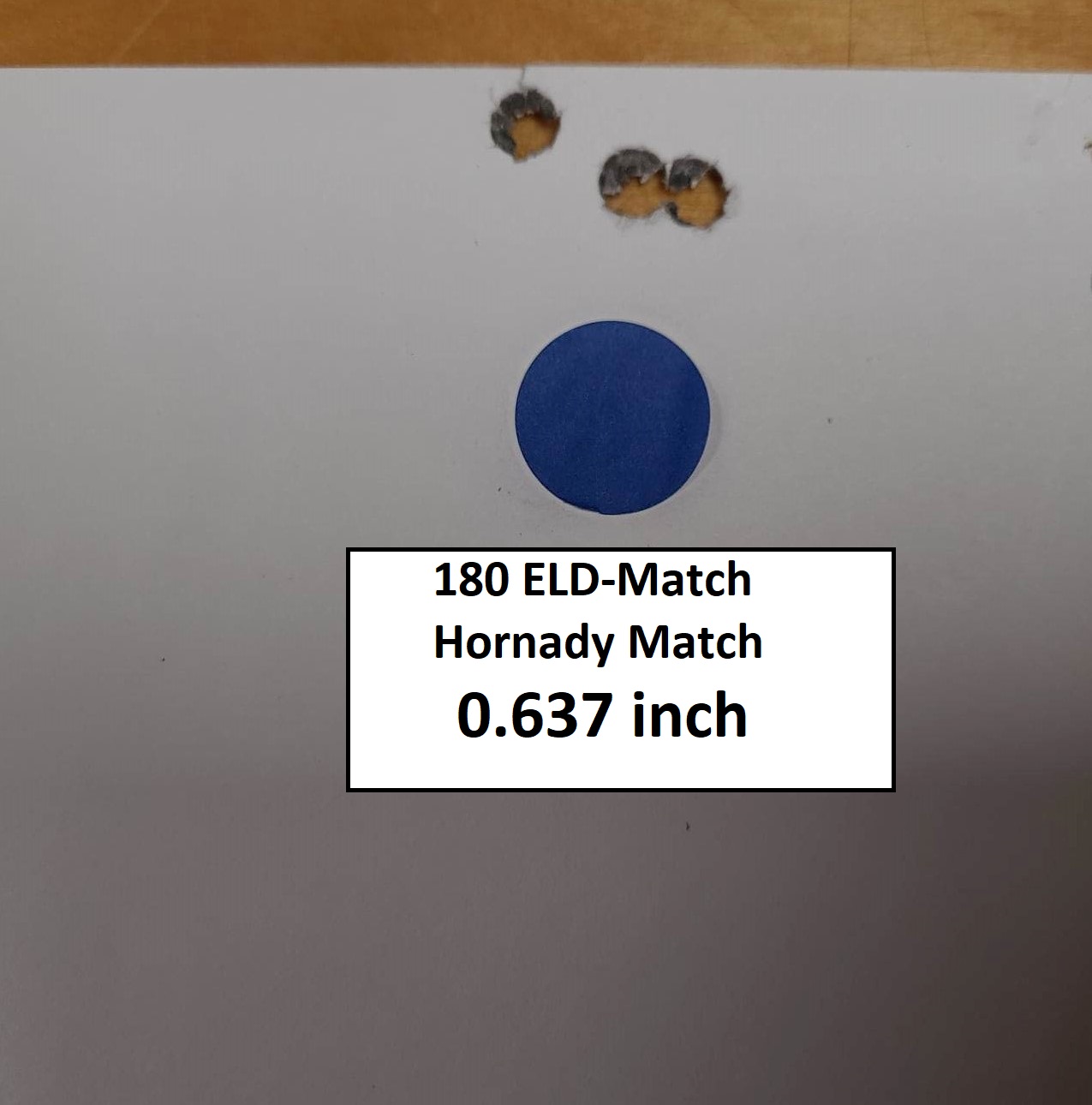Bill Gabbard
Another new 7mm round? I thought why in the world do we need another one? Then I laughed and asked myself “Aren’t you the guy that just wrote about the Magnificent 7mm?”. Hornady recently introduced the 7mm PRC to fill the gap between their popular 6.5 PRC and 300 PRC. To be honest I couldn’t wait to get my hands on one. Is there a need for it? I doubt it. Is there a market for it? There probably is because the 6.5 PRC is one of the fastest growing calibers out there based on the number of manufacturers offering it.
There are a lot of hunters out there, like me, that are addicted to all the .284 caliber rounds and the 7mm PRC checks all the boxes for a modern round. Shorter non-belted case, long throat to allow for long “heavy for caliber” bullets and rifles with fast twist barrels to shoot those bullets accurately. Several rifle manufacturers are already listing the 7mm PRC on their websites.
Testing a new round calls for good equipment. A few emails and phone calls later I felt that I had a pretty good setup to try out the 7mm PRC. Savage provided a 110 Ultralight while Leupold shipped a VX5-HD 3 X 15 X 44. Hornady supplied their 175 gr Precision Hunter ammo loaded with their excellent 175 gr ELD-X bullets along with 180 gr MATCH ammo loaded with their 180 gr ELDX. The ELD-X bullet lists a Muzzle velocity of 3000 fps while the 180 MATCH claims 2975. They also list a 160 gr CX bullet in their Outfitter ammo with a muzzle velocity listed at 3000 fps.

So, how does the 7mm PRC stack up against the other 7mm Magnums? On paper it looks pretty darn good. With most bullet weights the difference in listed velocities between the longtime favorite of the 7mm crowd, the 7mm Remington Magnum, and the 7mm PRC is less than 100 fps. Some sources indicate that the PRC is a little faster and some show the Rem Mag faster.
I checked several reloading manuals and online sources and found very little difference in the velocities. It is faster than the 280 Remington, the 280 AI, as well as the 7mm WSM and 7mm SAUM. With most bullet weights, it comes in a little slower than the 7mm Weatherby Mag. The 7mm STW, 28 Nosler as well as the 7mm RUM, all outpace it. So where does it fit? The biggest advantage that I can see is the shorter case and long throat design will allow it to shoot the “heavy for caliber” bullets more accurately. The lack of a belt allowing it to headspace on the shoulder will probably help accuracy as well.
Savage Arms sent their new 110 Ultralight. The 110 Ultralight has a PROOF Research Carbon Fiber Wrapped Stainless Steel Cut Rifled Barrel mated to a factory blueprinted action of a lightweight stainless steel receiver with a Melonite finish. The 110 has a threaded muzzle with a flush fit cap making it simple if you want to add a muzzle brake or suppressor.
The rifle came with a spiral fluted bolt and a detachable magazine along with Savage’s signature Accu-Fit Stock and Accu-Trigger. These last two features I learned from the Savage Bear Hunter that I tested will not make the rifle shoot any better, but they definitely will help you shoot the rifle better! If you have a rifle equipped with these options take the time to make the rifle fit you and adjust the trigger to your liking. I assure you that it is worth the effort.
This is a nice-looking rifle. When I arrived at Trinity Outfitters, my local gun shop, to pick it up the owner Joe and a couple of customers had the Ultralight out admiring it and all agreed that it was an impressive rig! Suggested retail price is $1649. Online prices ranged from $1399.99 to $1489.99. A little online shopping or a visit to your local gun dealer might be worthwhile.
I mounted the Leupold VX5, gave the barrel a good cleaning, and headed to the range for the fun part of the project. Not surprisingly the positive clicks and spot on tracking of the Leupold had me on target in 3 shots. The first thing I noticed was the recoil. The 6.175-pound rifle topped with the 19.7-ounce scope left me with an unloaded rifle weighing just under 7 ½ pounds that gave a fairly sharp recoil. It wasn’t tortuous but it was significant enough to cause you to pay attention to having a firm hold on the rifle before firing. The light weight of the rig combined with the 175 and 180 gr factory ammo contributed to this but the excellent recoil pad on the Savage made it manageable.
|
Ammo |
Group 1 |
Group 2 |
Group 3 |
Group 4 |
Group 5 |
Average |
|
175 ELD-X |
0.783 |
0.639 |
0.451 |
0.783 |
0.999 |
0.731 |
|
180 ELD-M |
1.296 |
0.814 |
0.785 |
0.619 |
0.637 |
0.830 |
I zeroed the rifle and fired a few rounds to get the feel of the rifle and shot a three-shot group with each of the two boxes of Hornady ammo. I gave the barrel a quick cleaning and let the 110 Ultralight take a few days off while the temps stayed in the 30’s and the wind speed matched the temperature. Next trip out, I fired 4 three-shot groups with both the 175 ELD-X, and 180 ELD-Match ammo at 100 yds, giving the rifle time to cool down between groups. Accuracy for a stock rifle using factory ammo was quite impressive.


Any hunting rifle that shoots under one-half inch will get your attention, but shooting ten groups using two different types of ammo with two different bullet weights and only having one group exceed one inch is exceptional. I must add that the optical clarity of the VX5-HD made attaining this accuracy much easier. Building a handload that will outperform the Hornady factory ammo is going to be a challenge, but as soon as I can get my hands on a set of dies, I intend to try!
Will the 7mm PRC be a commercial success? With the support that Hornady gives its new rounds combined with fact that several rifle makers in addition to Savage are already listing the new caliber - probably. Will it replace the 7mm Remington Magnum - I doubt it. There are too many manufacturers building them along with a wide variety of factory ammo available for it to be replaced easily. Do you need one? Let’s be honest here, very few of us probably need one, but that won’t stop many of us from buying one.




























